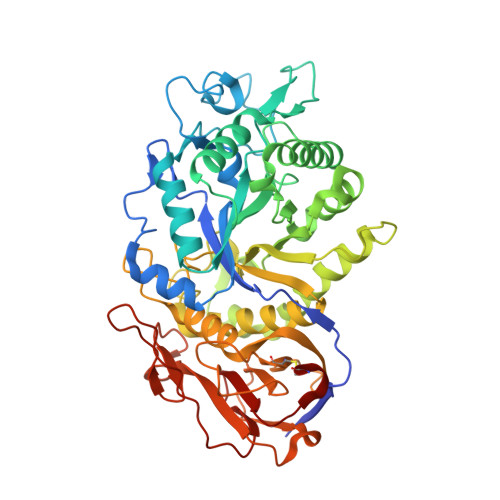Structure and cleavage pattern of a hyaluronate 3-glycanohydrolase in the glycoside hydrolase 79 family.
Huang, H., Hou, X., Xu, R., Deng, Z., Wang, Y., Du, G., Rao, Y., Chen, J., Kang, Z.(2022) Carbohydr Polym 277: 118838-118838
- PubMed: 34893255
- DOI: https://doi.org/10.1016/j.carbpol.2021.118838
- Primary Citation of Related Structures:
7EYO - PubMed Abstract:
Hyaluronidases have attracted a great deal of interest in the field of medicine due to their fundamental roles in the breakdown of hyaluronan. However, little is known about the catalytic mechanism of the hyaluronate 3-glycanohydrolases. Here, we report the crystal structure and cleavage pattern of a leech hyaluronidase (LHyal), which hydrolyzes the β-1,3-glycosidic bonds of hyaluronan. LHyal exhibits the typical structural features of glycoside hydrolase 79 family but contains a variable 'exo-pocket' loop where basic residues R102 and K103 are the structural determinants of hyaluronan binding. Through analysis of the hydrolysis of even- and odd-numbered hyaluronan oligosaccharides, we demonstrate that hexasaccharide is the shortest natural substrate, which can be cleaved from both the reducing and non-reducing ends to release disaccharides, and pentasaccharides are the smallest fragments for recognition and hydrolysis. These observations provide new insights into the degradation of hyaluronan and the evolutionary relationships of the GH79 family enzymes.
- The Key Laboratory of Carbohydrate Chemistry and Biotechnology, Ministry of Education, School of Biotechnology, Jiangnan University, Wuxi 214122, China; The Science Center for Future Foods, Jiangnan University, Wuxi 214122, China.
Organizational Affiliation:


















